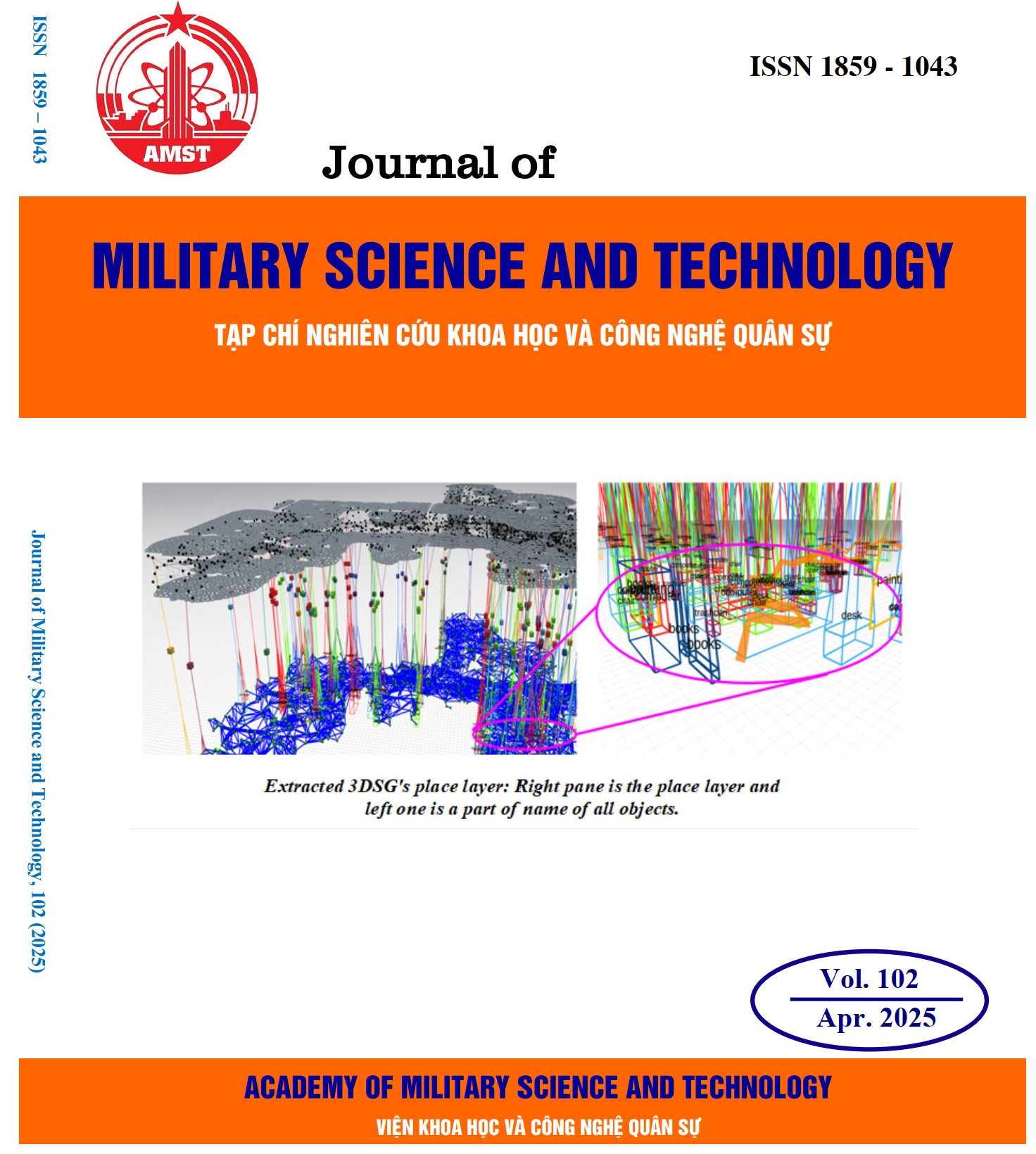Isolation and structural determination of compounds from Alstonia scholaris (L.) R. Br. (Apocynaceae), collected in Vietnam
353 viewsDOI:
https://doi.org/10.54939/1859-1043.j.mst.102.2025.94-100Keywords:
Apocynaceae; Alstonia scholaris; Triterpenoid; Sterol; Sugar.Abstract
Alstonia scholaris (L.) R. Br. belongs to the genus Alstonia in the family Apocynaceae. For the first time, the current research phytochemically studied on A. scholaris, collected from Vietnam. By silica gel column chromatographic separation, a triterpenoid betulin (1) and a sterol β-sitosterol (3) were found in the ethyl acetate (EtOAc) extract of the leaves. Meanwhile, isolation of the methanol (MeOH) extract of the bark yielded a triterpenoid β-amyrin (2), a sterol β-sitosterol (3) and a free sugar compound sucrose (4). Oxidation of compound 1 with K2Cr2O7 in an acidic medium resulted in betunic acid derivative (1a) with a yield of 43.8%. The structures of these compounds were determined by analysis of spectroscopic data.
References
[1]. M.X. Zhao, J. Cai, Y. Yang, J. Xu, W.Y. Liu, T. Akihisa, W. Li, T. Kikuchi, F. Feng, J. Zhang “Traditional uses, chemical composition and pharmacological activities of Alstonia R. Br. (Apocynaceae): A review”, Arabian Journal of Chemistry, Vol. 16, No. 8, pp. 104857, (2023). DOI: https://doi.org/10.1016/j.arabjc.2023.104857
[2]. M. Gandhi, V.K. Vinayak “Preliminary evaluation of extracts of Alstonia scholaris bark for in vivo antimalarial activity in mice”, Journal of Ethnopharmacology, Vol. 29, No. 1, pp. 51-57, (1990). DOI: https://doi.org/10.1016/0378-8741(90)90097-D
[3]. M.S. Khyade, D.M. Kasote, N.P. Vaikos “Alstonia scholaris (L.) R. Br. And Alstonia macrophylla Wall. Ex G. Don: A comparative review on traditional uses, phytochemistry and pharmacology”, Journal of Ethnopharmacology, Vol. 153, No. 1, pp. 1-18, (2014). DOI: https://doi.org/10.1016/j.jep.2014.01.025
[4]. H. Joshi, G.K. Saxena, V. Singh, E. Arya, R.P. Singh “Phytochemical investigation, isolation and characterization of betulin from bark of Betula utilis”, Journal of Pharmacognosy and Phytochemistry, Vol. 2, No. 1, pp. 145-151, (2013).
[5]. A. Sami, M. Taru, K. Salme, Y.K. Jari “Pharmacological properties of the ubiquitous natural product betulin”, European Journal of Pharmaceutical Sciences, Vol. 29, No. 1, pp. 1-13, (2006). DOI: https://doi.org/10.1016/j.ejps.2006.04.006
[6]. M. Sholichin, K. Yamasaki, R. Kasai, O. Tanaka, “13C Nuclear magnetic resonance of lupane-type triterpenes, lupeol, betulin and betulinic acid”, Chemical and Pharmaceutical Bulletin, Vol. 28, No. 3, 1006-1008, (1980). DOI: https://doi.org/10.1248/cpb.28.1006
[7]. R.H. Cichewicz, S.A. Kouzi, “Chemistry, biological activity, and chemotherapeutic potential of betulinic acid for the prevention and treatment of cancer and HIV infection”, Medicinal Research Reviews, Vol. 24, No. 1, 90-114, (2004). DOI: https://doi.org/10.1002/med.10053
[8]. M.C.C. De Oliveira, M.G. De Carvalho, C.J. Da Silva, A.A. Werle “New biflavonoid and other constituents from Luxemburgia nobilis (EICHL)”, Journal of Brazilian Chemical Society, Vol. 13, No. 1, 119-123, (2002). DOI: https://doi.org/10.1590/S0103-50532002000100020
[9]. M.G. De Carvalho, C.R.X. Velloso, R. Braz-Filho, W.F. Da Costa “Acyl-lupeol Esters from Parahancornia amapa (Apocynaceae)”, Journal of Brazilian Chemical Society, Vol. 12, No. 4, 556-559, (2001). DOI: https://doi.org/10.1590/S0103-50532001000400020
[10]. A. Cazor, C. Deborde, A. Moing, D. Rolin “Sucrose, glucose, and fructose extraction in aqueous carrot root extracts prepared at different temperatures by means of direct NMR Measurements”, Journal of Agricultural and Food Chemistry, Vol. 54, No. 13, pp. 4681-4686, (2006). DOI: https://doi.org/10.1021/jf060144i
[11]. P.M. Tyrell, J.H. Prestegard “Structural studies of carbohydrates by deuterium NMR: Sucrose”, Journal of American Chemical Society, Vol. 108, No. 14, 3990-3995, (1986). DOI: https://doi.org/10.1021/ja00274a023







